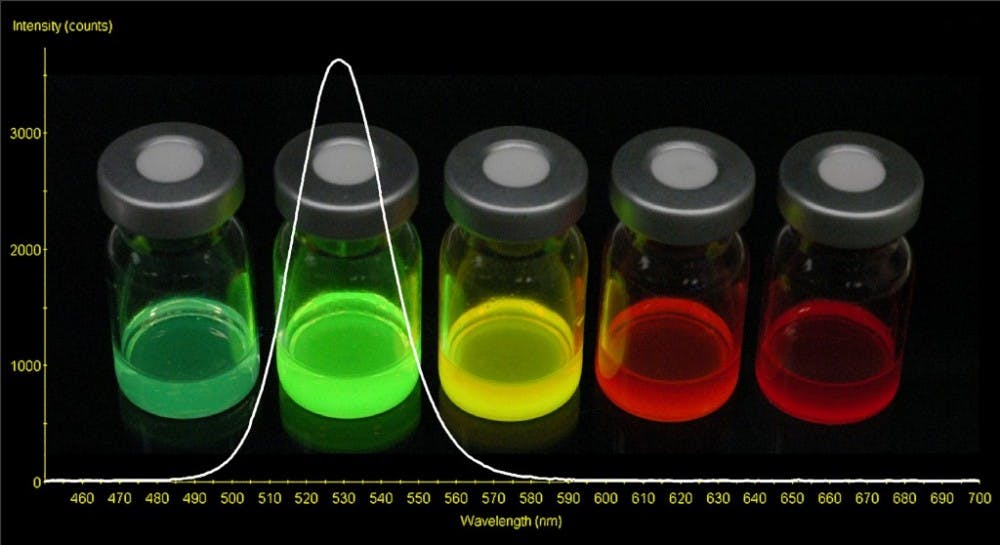Within the past decade, research on quantum dots, particularly in the biomedical research field, has developed rapidly. New research focuses on combining the fields of nanomaterials and biomolecules to get nanoparticles to recognize and bind with biomolecular targets. Once combined with biomolecules, quantum dots can be used for specific cell labeling and imaging.
Using this technique, a research team at the University of Leeds recently discovered how exactly HIV and Ebola viruses attach to cells to spread infection. In this study, the team also demonstrated that quantum dots capped with specific polysaccharides, or sugars, can inhibit the entry of a pseudo-Ebola virus into target cells.
Quantum dots are small man-made crystals — 10,000 times narrower than a human hair — that possess tunable electronic characteristics. After being illuminated by light, the dots can glow a particular color depending on their size and shape. Big dots emit long wavelengths, whereas small dots emit shorter wavelengths.
These crystals are usually found in television screens, since the ability of crystals to precisely convert and tune spectrum light makes them ideal for LCD displays. Their usefulness in the biomolecular field is currently being tested, and they are starting to emerge as advanced fluorescent probes for biomolecular and cellular research.
The research team led by Yuan Guo used quantum dots to mimic the shape of viruses and conducted experiments to reveal how viruses bind to cells, an interaction which was an enigma until now. The study exposed the ways in which two surface sugar-binding proteins on human cells — named “DC-SIGN” and “DC-SIGNR” — bind to the surface sugars on HIV and Ebola viruses, a critical step in virus infection and propagation.
Since quantum dots cannot bind directly to cells, they first have to be coated with sugars using a technique that was newly developed at the University of Leeds. Coating the quantum dots with sugar allows the dots to mimic the way that viruses attach to the surface of healthy cells.
“We often only hear about sugar in a negative light, about how consuming it is bad for our health. But there are many different types of sugars that play a vital role in human biology,” co-author Bruce Turnbull of Cornell University said in a press release, referring to the way in which sugars interact with surface proteins.
In order to better understand what factors control the binding process between viruses and healthy cells, the researchers used a strategy known as quantum dot fluorescence resonance energy transfer (FRET) microscopy.
FRET is predominantly used to examine the location and nature of the interactions between two specific molecular species. Combined with the fluorescence characteristics of quantum dots, FRET technology can also be applied to explore protein-ligand interactions for important biological events, such as the binding of HIV and Ebola virus surface sugars to surface proteins on cells.
This quantum dot FRET microscopy was not applied to probe protein-ligand interactions before because there was no effective approach to prepare compact, biocompatible and dense polyvalent quantum dots for sensitive FRET readout.
However, the team’s approach to prepare these quantum dots proved to be efficient and effective for their FRET readout strategy. Based on the data acquired by quantum dot FRET analysis, the research team proposed that the binding domains of DC-SIGN face upward along the coiled-coil axis connected to the cell surface, but they face sideways in DC-SIGNR.
Because the binding domains of DC-SIGN face upward, multiple coated quantum dots are able to bind to each site.
The authors concluded that only DC-SIGN binds efficiently to small, spherical binding sites. Moreover, their findings reported that quantum dots coated with sugars can prevent a pseudo-Ebola virus from binding to target cells. This discovery can produce future strategies to inhibit DC-SIGN- and DC-SIGNR-mediated infections.





